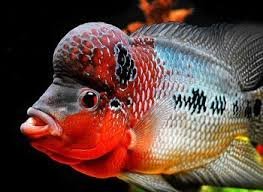Tips
Dr. Siby K Chacko,
15 - Jul - 2015
Ornamental Fish Rearing Tips

Ornamental fish keeping and its propagation has been an interesting activity for many, which provide not only aesthetic pleasure but also financial openings. About 600 ornamental fish species have been reported worldwide from various aquatic environments. Indian waters possess a rich diversity of ornamental fish, with over 100 indigenous varieties, in addition to a similar number of exotic species that are bred in captivity
Fish species/types suitable for breeding
Among the indigenous and exotic freshwater species, the varieties having good demand can be bred and reared for commercial purpose. Species that can be produced easily and popular as commercial varieties are coming under egg-layers and livebearers.
Livebearer species
- Guppies (Peocillia reticulata)
- Moly (Mollinesia sp.)
- Sword tail (Xiphophorus sp.)
- Platy
Egg-layers
- Goldfish (Carassius auratus)
- Koi carp (Cyprinus carpio var. koi)
- Zebra danio (Brachydanio rerio)
- Black window tetra (Cymnocro-cymbus sp.)
- Neon tetra (Hyphesso-brycon innesi)
- Serpae tetra (Hyphessobrycon callistus)
Others
- Bubbles-nest builders
- Angelfish (Pterophyllum scalare)
- Red-line torpedo fish (Puntius denisoni)
- Loaches (Botia sp.)
- Leaf-fish (Nandus nandus)
- Snakehead (Channa orientalis)
A beginner should start the work on breeding of any live-bearer followed by goldfish or any other egg-layer for getting acquainted with the procedures on handling and maintenance of brood fish and young one. Good knowledge on the biology, feeding behavior and ambient condition of the fish are prerequisites for breeding. Live food like Tubifex worms, Moina, earthworms’ etc. for brood-stock and larval stages need special attention. The larvae similarly need infusoria, artemia naupli, plantons such as rotifers and smaller daphnia during the early stage. A unit for continuous production of live-food is, therefore necessary for successful maintenance of the unit. In most cases breeding is easy, but larval rearing might require special care. As a supplementary feeding the farmer can prepare on-site pelletted feed by using local agro-produce. To avoid health related problems, a proper water quality needs to be ensured by installing biofilters. The ornamental fishes can be bred at varied periods of the year.
Some tips for the successful production of ornamental fishes
- Breeding and rearing unit should be made near a constant supply of water and electricity. If the unit is located near the streams, it will be excellent where the unit can receive portable water and the rearing unit can be made flow-through.
- Constant availability of agro-based byproducts like oil cakes, rice polish and wheat bran, and animal-based protein such as fish meal and prawn-head meal, will facilitate preparation of pelleted diet for the fish. The brood-stock selected for breeding should be of superior quality so that they produce quality fish for sale. It is advisable that the young ones could be grown till their maturity. It not only gives enough experience of handling the fish but also helps in controlled selection.
- Breeding and rearing unit may be established preferably nearer to airport/railway station so that live fish could be easily transported to internal market as also for export.
- A fish breeder could concentrate preferably on a single marketable species to streamline management measures.
- Proper knowledge on market demand, customer preference and overall, the operation of a marketing network through personal contacts and public relation is desirable.
- Pioneer and expert groups in this field may always be kept in touch with to keep track of recent developments in marketing as well as research advancements, through training.
Source: Central Institute of Freshwater Aquaculture, Bhubaneshwar, Orissa
Others

|
Want to be A veterinarian...?? |

|
Puppy Selection Tips |

|
Ornamental Fish Rearing Tips |

|
Grooming of Pet Dogs |

|
How to be a good pet owner |

|
Pet health tips |

|
Puppy Rearing Tips |
|
|
Animal Health Tips:WALKING DANDRUFF TO TROUBLE YOUR LOVED ONES |
|
|
Dog Skin Care Tips |
|
|
Protecting your Pets Vision |

|
Safe Food items for your Pet Dog. |